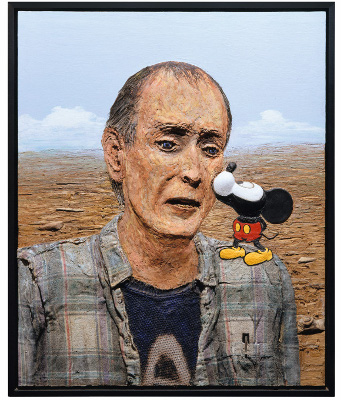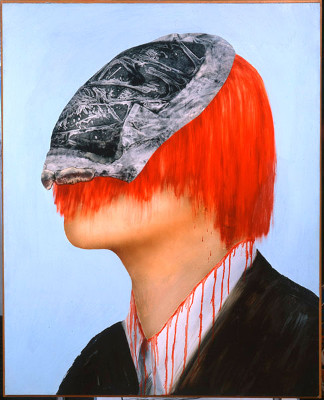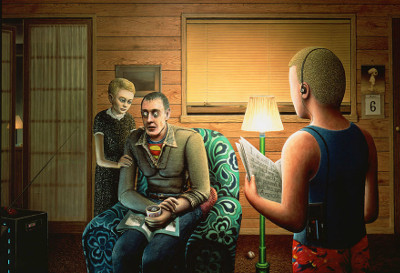CURATOR'S CHOICE SM
Exhibition Reviews
| Home | | Museum
Guide | | International |
| Theater |
Llyn Foulkes career retrospective at The New Museum
By William Gutierrez
An underappreciated name on the East Coast, contemporary artist Llyn Foulkes is far better known out west for his diverse array of works. Born in Yakima, Washington, Foulkes made a name for himself in Los Angeles, where he had his first solo exhibition in 1961. The recently opened exhibition at The New Museum at 235 Bowery serves as a career retrospective for Foulkes, while also being Foulkes’ first exhibition at a New York museum, featuring a huge diversity in medium, subject matter, and style. Foulkes accomplished much over his career, but the theme of questioning always remains. He wants to defy the establishment, and urges his viewers to draw their own conclusions both about the subject matter and his manner of portrayal.
Foulkes is unique in that he has successfully worked with every kind of visual art over his career. The New Museum exhibition features drawing, painting, photography, found objects, and works that are difficult to distinguish between all these mediums. Upon entering the exhibit, two tables present simple ink drawings by Foulkes. The drawings appear simple, even childlike, as they feature animals and people with exaggerated features. Yet the lines are precise and unquestioning, and the proportions, while not realistic, always make sense in the context of the playfulness of the drawing. Despite their immediate childlike quality, they often feature mature and even disturbing themes. Nudity and disfigurement display prominently. That subversive element of violence is often present in Foulkes’ work. An entire room of the exhibit is dedicated to his “bloody head” portraits, the fist one of which is supposed to be a self-portrait. These paintings vary widely in size, yet each features a head, either turned to the side or at a three-quarter view, where the top half is covered in bright red splashes of “blood.” There is no defined source of the blood, and it covers features rather than cleaving to their forms. This ambiguity makes the portraits all the more eerie—who are these people? Why is there blood, and where is it coming from? Did we do this? In the 1980s, Mickey Mouse became a constant motif in Foulkes’ art. Though clearly recognizable, Mickey holds a completely different presence in this artwork. The character so beloved by many Americans appears as a pest, perched on the shoulder of a figure, or forcing himself into their face. In one painting, Mickey appears as the face of George Washington, clearly suggesting that the real cultural leaders of the country are corporate copies rather than influential individuals. In making a mockery of Mickey, one of Foulkes’ most recognizable images, that of Mickey Mouse with the body of a pioneer woman, began to be used frequently at this time.
Also around this time, Foulkes began to make more and more use of his now-famous narrative tableaux. These expansive works dominate the space they’re in, as they are not only rather large in the traditional sense, but they also contain an element of depth. More than anything, these pieces look like shallow cabinets into which paintings and found objects have been artfully arranged. These are the perfect method through which Foulkes could continue to create sweeping landscapes of the American west, often filled with symbolism on corporate greed. The retrospective is an excellent intoduction to Foulkes' work if it is new to a viewer, and also serves as a catalog of the many stages of his career for a dedicated fan.
If you go:
William Gutierrez is a student at Williams College, and the Arts Editor of the Williams Record. |


